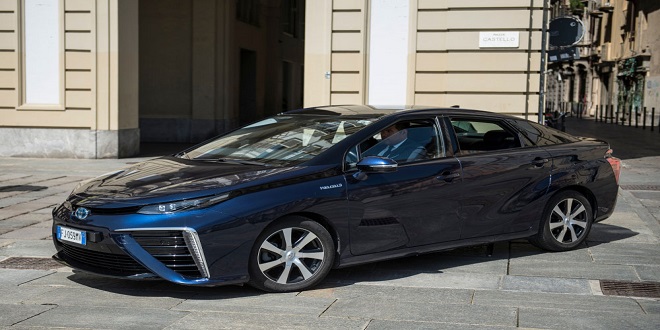Energy Sources: Resources, Potential, and Properties

Transformation of the chemical energy of a fuel with the general structure CmHnOp is possible in two ways:
– In thermal engines, chemical energy is converted into heat and subsequently into work for direct car propulsion or for on-board current generation. In the same way, the conversion energy—heat—work occurs during the generation of electric energy in power plants, and so for the batteries of electric cars.
– In fuel cells, chemical energy is converted into electric energy as a result of proton exchange from hydrogen to oxygen. The hydrogen can be obtained on board from any available fuel with the structure CmHnOp.
When one of these resources (whether fossil or regenerative) contains carbon in its molecule, any chemical reaction for an energy transformation into heat or electric energy leads, independent of other products, to CO2. The difference between fossil and regenerative sources lies in the partial CO2 recycling in nature.
The amount of CO2 that is absorbed by plants and transformed into energy is, at this time, lower than CO2 emissions from agricultural machines and combustion in car engines. In Brazil, for example, CO2 recycling between sugar cane cultivation and the emission from combustion in car engines is estimated at 60 %. Even this is a net advantage in comparison with fossil fuels.
This percentage will increase when all the machines in the entire chain between plant cultivation, fuel production, and fuel combustion in engines are adapted to work with the same regenerative fuel. The other, essential advantage is the unlimited, timeless availability of these regenerative energy sources, which are sufficient for the increasing mobility demands expected in the future.
The Food and Agriculture Organization of the United Nations (FAO) estimates for the year 2030 a total worldwide energy consumption of 720 exajoule per year (430 EJ/year in 2000).The agrarian surface area used for production of bioenergy (sugar cane, sugar beet, rape) is estimated to increase up to 580 106 ha, giving 1031 EJ/year. There are different studies affirming, for example, that ethanol is not a fuel solution for Germany because the area for beet cultivation is not sufficient.
Similar to the introduction of natural gas as a crude oil–based fuel in the automotive industry, the first step toward the use of other fuels will be bivalent on-board systems; this is a pragmatic reaction to the need for a supply infrastructure. There now are bivalent systems in use, such as compressed natural gas (CNG)/gasoline and liquid petroleum gas (LPG)/gasoline, with separate reservoirs and injection systems. Such bivalent systems are not required for alcohols and oils.
Methanol and ethanol have properties that are similar to those of gasoline, allowing their storage (as a mixture) in the same reservoir, and their dosage with the same injection system. Engine operation with variable mixtures of gasoline, ethanol, and methanol is currently being explored. Vegetable oils and diesel fuel have similar properties.
The fuel structure (CmHnOp) has an influence on both the structure and concentration of the combustion products, which depend on the mass proportion of carbon and hydrogen in the combustion reaction. As extreme examples, the combustion of carbon (C1H0O0) leads to the maximum concentration of CO2; on the other hand, the combustion of hydrogen (C0H1O0) results in pure water, without CO2.
Last word
However, oils must generally be esterified because of possible cooking during combustion and the tendency for mucilage production in the storage system. This explains why the processing of mixtures of diesel fuel and oil is tending to be moved from the reservoir to the refinery; in this way, hydrocarbon fuels with unitary molecular structures are obtainable





